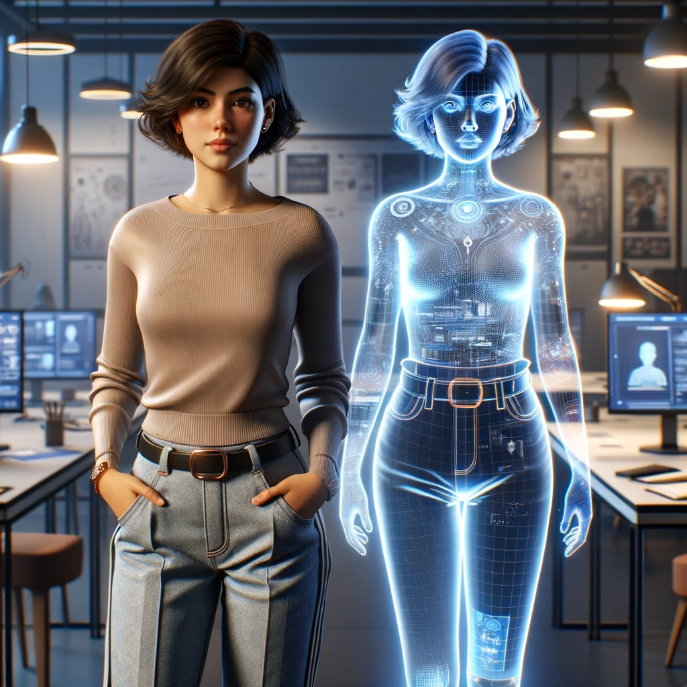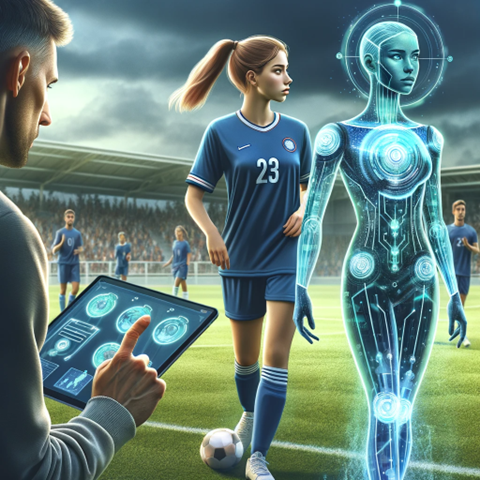What if…
Digital twins for learning
At the College of the Future where I study, every admitted student is implanted with a microchip the size of a peppercorn to activate their digital twin. This technology may seem quite advanced, but it appears that the idea of digital twins appeared back in the 2000s. I did my research: the integration of this type of technology is the result of extensive research and the use of connected objects in our lives.
The 1st connected object appeared in 1982. It was a soda vending machine installed at Carnegie Mellon University in Pittsburgh, Pennsylvania, in the United States. The device indicated the filling level and the temperature of the beverages.
Then, the development of the Internet of Things accelerated in the 2000s. 50 years later, as AI and transhumanist technologies are omnipresent, education communities worldwide have transitioned to using electronic chips implanted into students’ wrists to monitor their physical and mental health and support them in their learning.
Nowadays, in 2050, competition for jobs among humans is fierce. More than 90% of the population is educated. We begin schooling at the age of 10 to allow time for growth and learning with our parents. Then, we spend an average of 20 years in an educational institution.
With the emergence of AI in the 2020s, the idea of using digital twins in education has increasingly developed.
My name is Anne-Lynn, and my digital twin is called Nalyann.

Nalyann and I (Image generated by Dall.E 3)
She helps me in different aspects of my learning. For example, I love integral calculus, but sometimes I struggle to understand mathematical problem statements because of my dyslexia. Nalyann quickly realized this difficulty because she has been observing me since my early days in Science. She helped my math teacher understand what I needed and suggested different approaches to improve my understanding of problem statements. She also proposed fun games related to the understanding of statements to keep me interested and motivated in my math class.
I appreciate Nalyann’s presence because it reassures me and makes me feel less stressed during classes. When I’m nervous before an exam, she reminds the pedagogical teams to give me advice on stress management.
Nalyann is like having a personal assistant who knows me really well and is always there to help me learn and feel safe at college. She systematically records my learning activities, tracks my grades, analyzes how I learn, asks me questions, and listens to me.
Recording and analyzing learning data
When I complete an assignment, follow an online course, or participate in class, Nalyann takes notes. At the end of the week, she proposes a summary and presents in a personalized way the topics, classes, or disciplines that I find easier and those that require a bit more effort.
According to my digital twin, I learn better through listening and by doing micro-activities. So, my twin always finds ways to suggest podcasts, masterclasses, or discussion groups on different topics. It is truly stimulating!
For instance, the last time I travelled to Montreal by high-speed train, on the trip, Nalyann suggested a philosophy podcast hosted by students discussing the concept of rationality in philosophy. Well, for someone who doesn’t enjoy philosophy, I can assure you that my twin knew me well enough to predict that this podcast would captivate me. She even suggested that I write to the hosts of the podcast, and they invited me to a recording session to discuss why philosophy is not a discipline I’m particularly fond of.
An assistant for students and a valuable resource for teachers
All the information related to my learning journey compiled by Nalyann is transmitted to the teaching staff. Nalyann provides them with the information they need to adapt their courses so that I can develop the competencies required to succeed.
If I compare this situation to how a soccer team works, I see the teacher as the head coach and Nalyann as my physical coach. A soccer team cannot win the match without the vision of the coach, the game tactics they instill, and their motivational spirit. Similarly, a player cannot keep up with the pace if they don’t have a physical coach who prepares them to keep up with the team.

A digital twin in education is like a sports trainer before a soccer match. (Image generated by Dall.E 3)
I was still worried about the moment they would implant the electronic chip into my wrist. Fortunately, the support staff was fantastic. I recorded the conversation I had with the person who was in charge of the procedure. Here is an excerpt of it:
Anne-Lynn: Hello madam! I’m a bit nervous about this microchip. Could you please tell me exactly how it will help me and what it will do?
Technician: Of course, I understand this is a new experience for you! This chip is very small, like a peppercorn, and it will comfortably lodge in your wrist. Its main role is to collect data on your vital signs, such as your heart rate, and even on your stress or fatigue levels. This information is really important to understand how you physically and mentally feel on a daily basis.
Anne-Lynn: And how will this data be used?
Technician: That’s a very important question you are asking. The data collected by the chip is sent to your digital twin, which will be named Nalyann. We created her name from the letters that form your own name. Nalyann is an advanced computer program. She will analyze this data to support you in the best way possible in your educational journey. For example, if you are very stressed or tired, she can suggest modifying your schedule to give you more rest time or recommend activities to relax.
Anne-Lynn: It seems quite useful, but is it ethical? I mean, who else will have access to this information? Could it be the target of cyberattacks or things like that?
Technician: Indeed, this question often arises. The ethical issue is at the heart of our program. Only health professionals and your college teachers will have access to some of your data. You will be the only person to authorize Nalyann to share such or such information regarding your learning data. Remember that Nalyann has been created for the sole purpose of helping you in your academic journey. We take privacy very seriously, and all your information is protected and secured. You alone are able to delete or keep it.
Anne-Lynn: How will I interact with this entity? Will it talk to me or something like that?
Technician: Your digital twin will communicate with you mostly through the mode you have chosen: rear projection, augmented reality, etc. She can send you personalized messages, reminders for your assignments or advice to improve your learning. You can also ask her questions or share your concerns. Think about it as a personal assistant dedicated to your academic success.
Anne-Lynn: We’re really in the future!
Technician: We are sure this will be very beneficial for you. Don’t hesitate if you have any other questions or concerns. We’re here to accompany you, Anne-Lynn.
Social and psychological implications
It is only the beginning of the digital twin adventure. There are aspects we are currently discovering, such as the social and psychological implications of the existence of this intrusive technology. If I spend too much time with my digital twin, and she follows me in my journey, is there a risk of developing an addiction? And what about human interactions with my college classmates if I’m constantly connected with Nalyann?
My grandmother was a fan of science-fiction movies. When I was younger, she introduced me to movies about the early days of AI in society. We could see some unbridled AIs that wished to replace humans or eliminate them from the face of the Earth. Up until now, the rapid measures taken to regulate and develop trustworthy AI have placed us far from these AI fantasy stories. However, I can’t help but think that Nalyann could manipulate me or become too obsessed with my success and end up being counterproductive.
Diversity of perspectives
One of my student friends was granted an exemption from receiving the electronic chip necessary to activate his digital twin. This situation amazes me: despite the absence of this technology, he excels in his studies. His “old-fashioned” approach stands out from the methods we have been used at the College of the Future. Collaborating with him on diverse projects, without Nalyann’s help, has prompted me to question the approach of my college, which seems to want to standardize the use of learning data. Why not offer freedom of choice on how to achieve academic success? If alternatives were available, each person could personalize their academic journey according to their own definition of success. It’s 2050, and I’m under the impression that we still haven’t understood that the salvation of humanity lies in our multifaceted human intelligence. Perhaps my digital twin has understood this…



